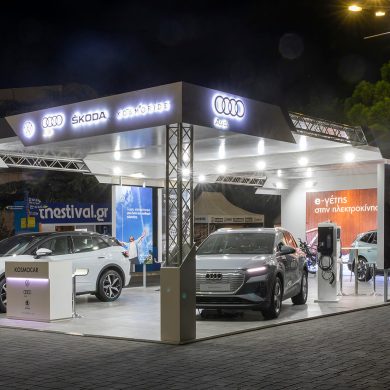Cayman GT4 and 718 Spyder, the two new flagship models in the 718 range
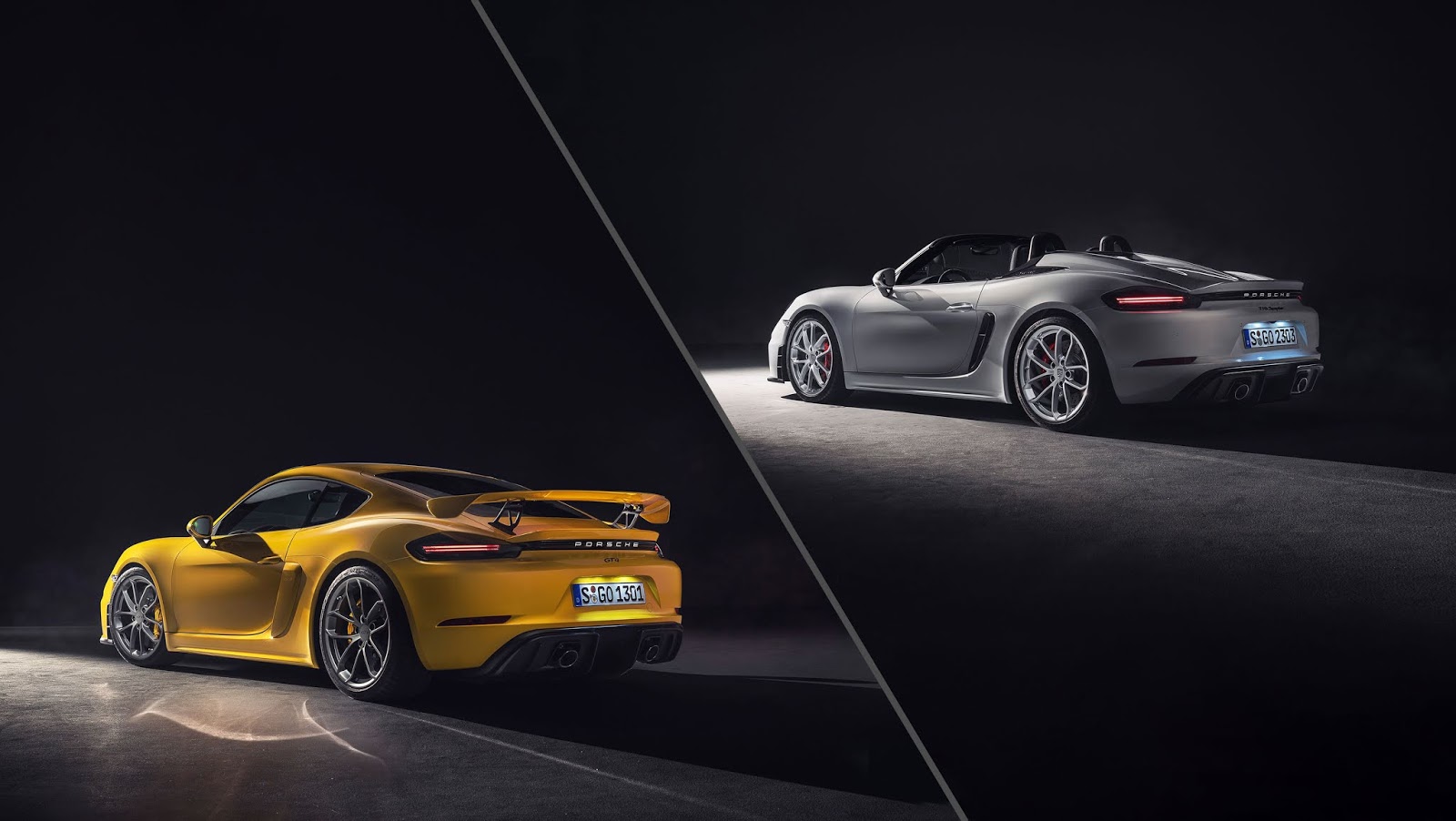
Porsche is a manufacturer with many years of experience in the field of sports car manufacturing. From the first 911 to the present day, all of its sports models have been very popular in the world and this is reflected in their great commercial success. Within the last decade, where more and more cars started to be equipped with dual-clutch automatic transmissions and downsized turbo engines, Porsche has tried, as much as it can while clearly continuing to be competitive with the models of other manufacturers, to be one of the last to follow this "new reality".
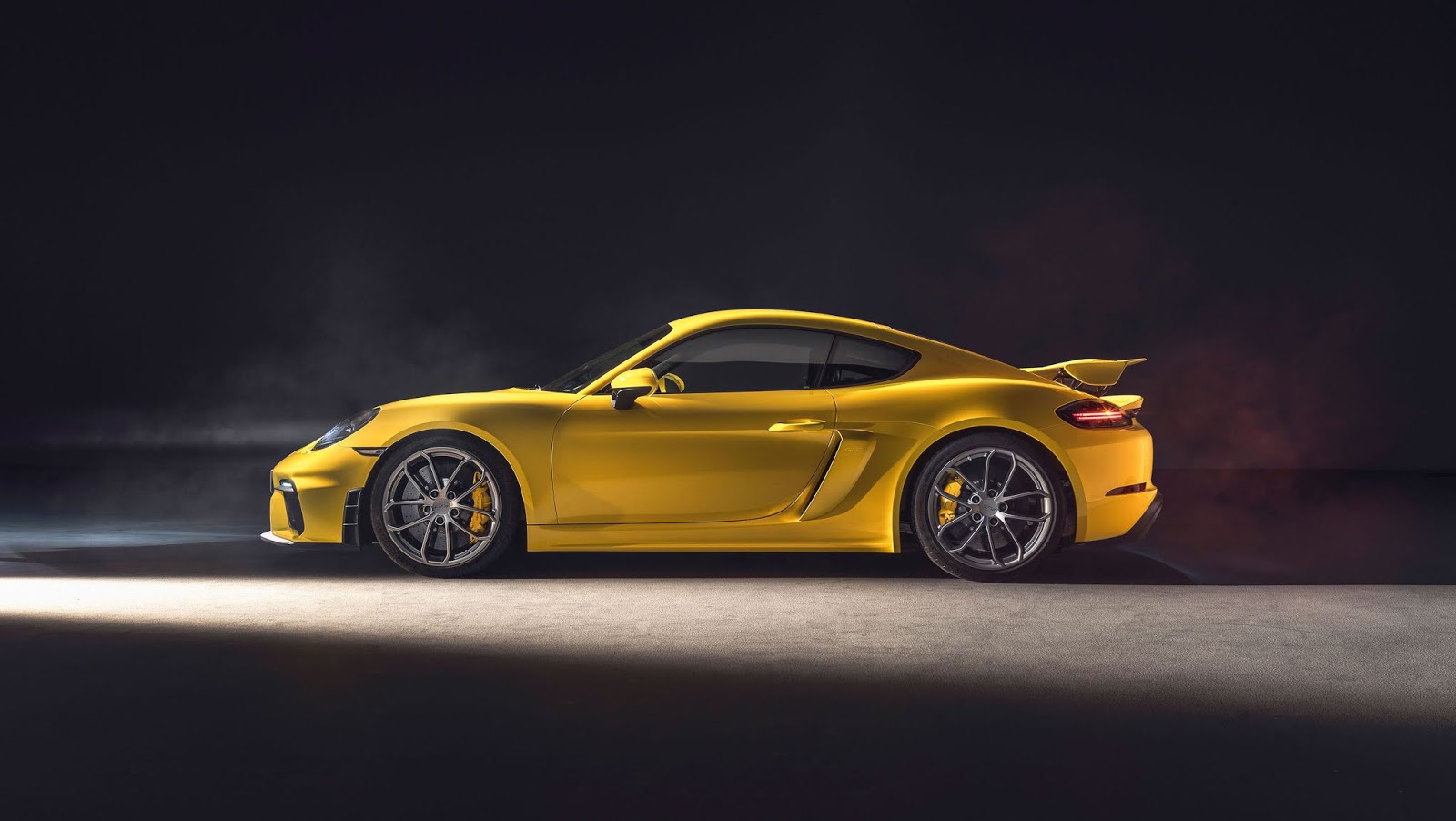
But it had to do so, both for performance reasons and for the emission standards imposed by the European Union, so the 718 generation of Boxster and Cayman is equipped with a 2-litre turbo 4-cylinder engine, which, although it performs impressively, leaves the driver a little bit hungry, especially when it comes to the sound.
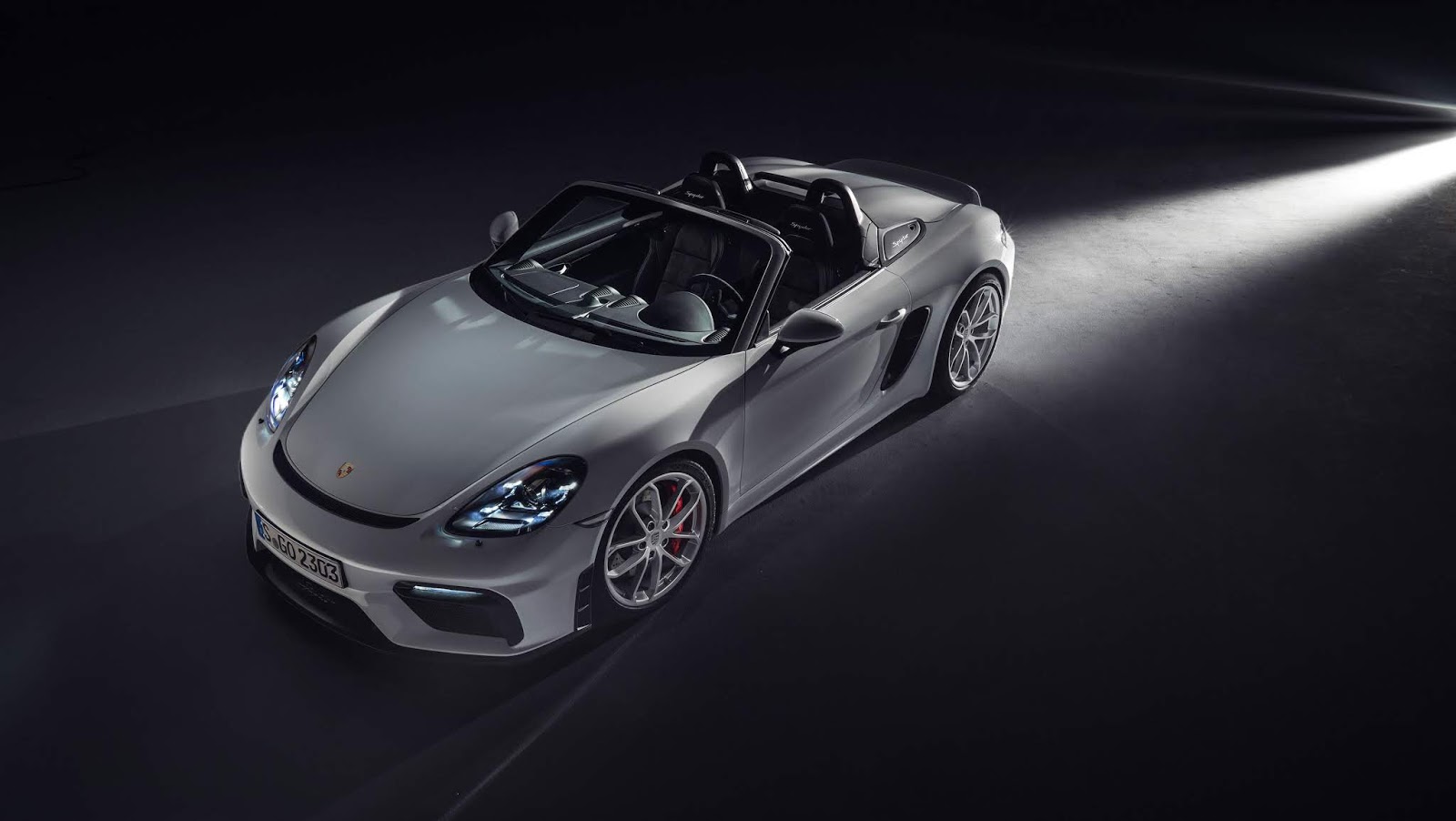
Many people wanted to hear an atmospheric flat-six in the "baby" Porsches again. Well, that time has come.
Same, but different
The two new 718s may look visually different, but underneath the car there are many similarities. For a start, they share the same 420bhp flat-six 4-litre atmospheric engine. This engine comes from the current generation 911 (992) and is speculated to be a detuned version of the engine seen in the upcoming 992 GT3. Another thing they have in common is the chassis, with that of the 718 Spyder apparently having some reinforcements due to the lack of a roof, as well as the same 6-speed manual transmission.
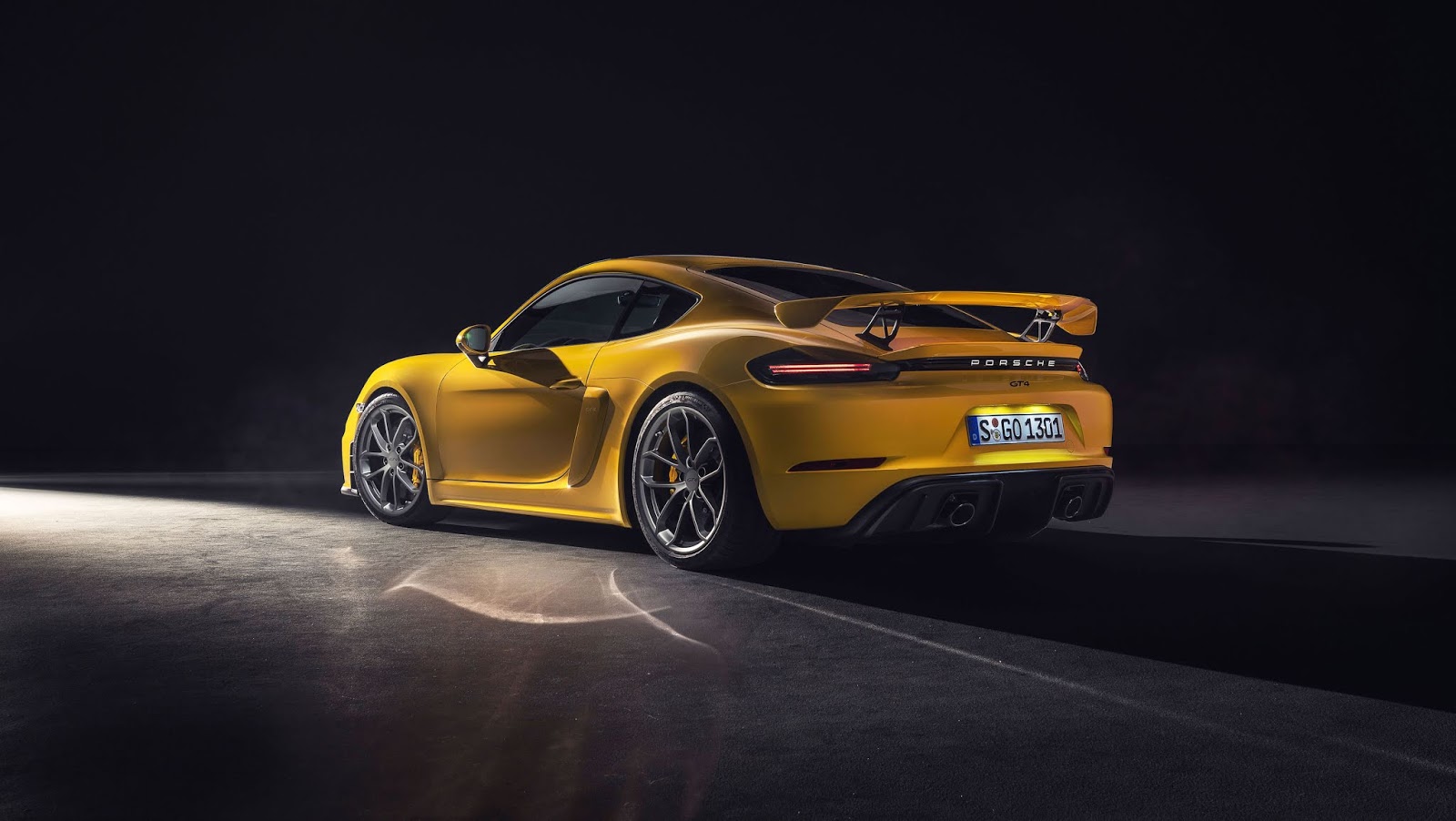
What they have in common is the chassis and mechanical parts, as well as the fact that they are both flagship models of the 718 series, but they occupy different positions in Porsche's overall model palette. On the one hand, the Cayman GT4 is the new entry-level model in the company's GT range, while the 718 Spyder, belongs to the company's Spyder model category (3rd generation for the Boxster).
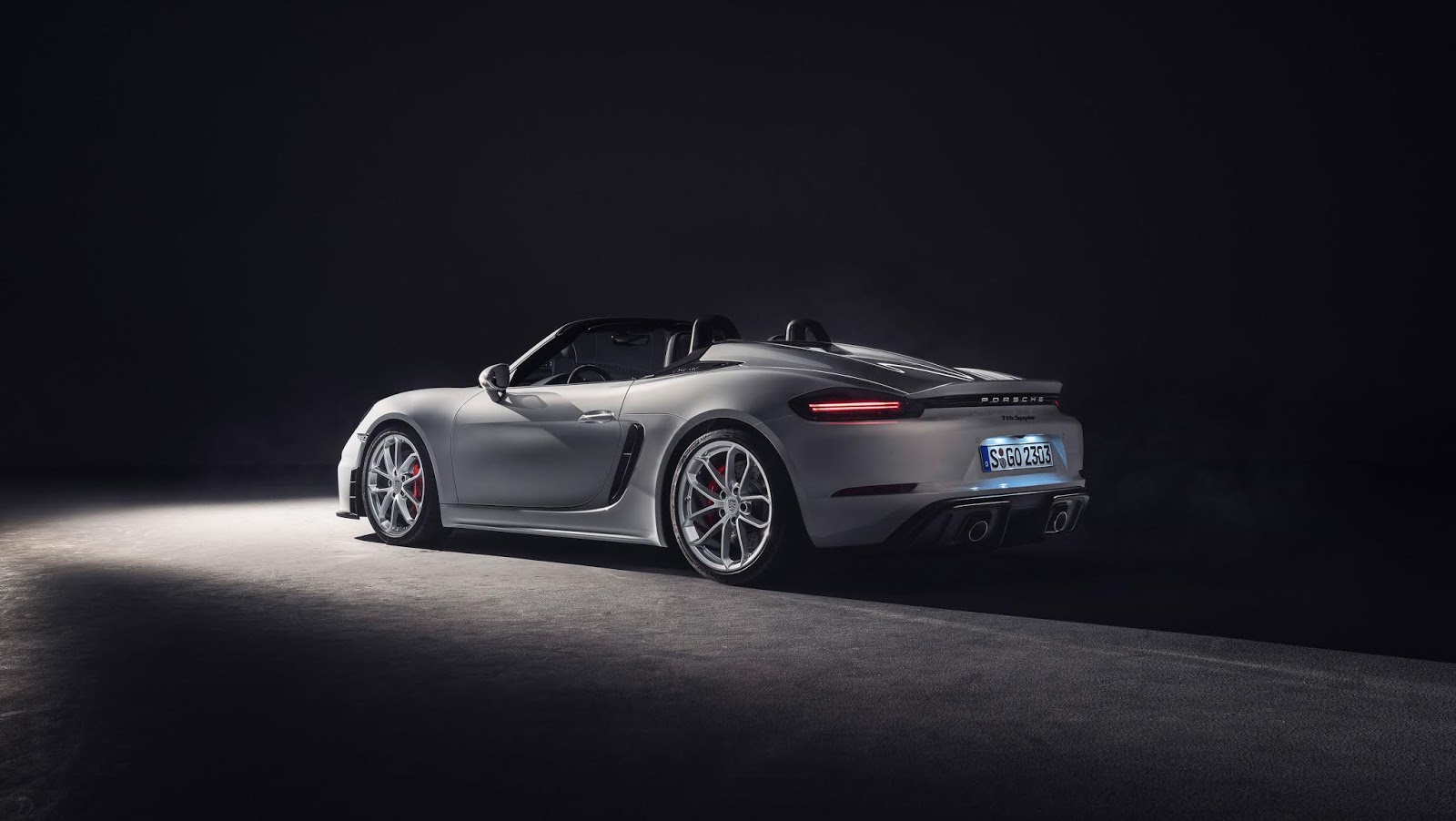
The beloved atmospheric flat-six, roaring again
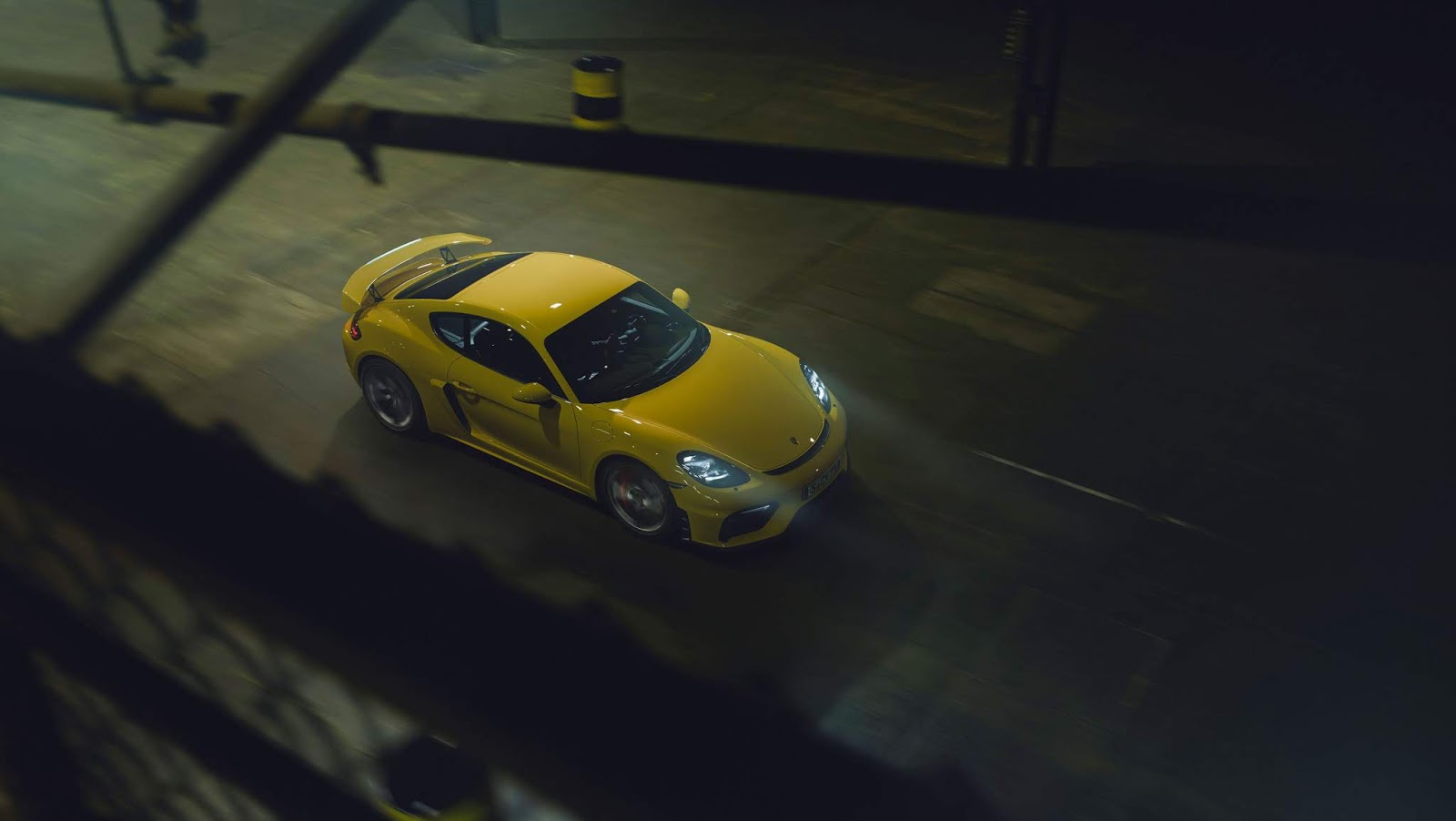
The new turbo engines may have a higher performance compared to the atmospheric engines they replace, but they lacked the most important element of a "pure" engine, the sound. It was, yes, good for a 4-cylinder, but inadequate for a Porsche.
However, everyone's favourite, the 4-litre atmospheric flat-six (the first time a 4-litre version of the flat-six has been fitted to the Boxster-Cayman range) is back with a revamp. This particular engine, delivers 420bhp (35 more than the previous GT4 and 45 more than the previous Spyder) and 420Nm of torque, between 5000 and 6800rpm. .
Thanks to this new engine, both models belong to the "300 club", as the GT4 has a top speed of 304 km/h and the Spyder 301 km/h, numbers that are logically very "underestimated", as Porsche is wont to do. In both cars, 0-100 is achieved in just 4.4 seconds, a respectable figure for a car with a manual gearbox.
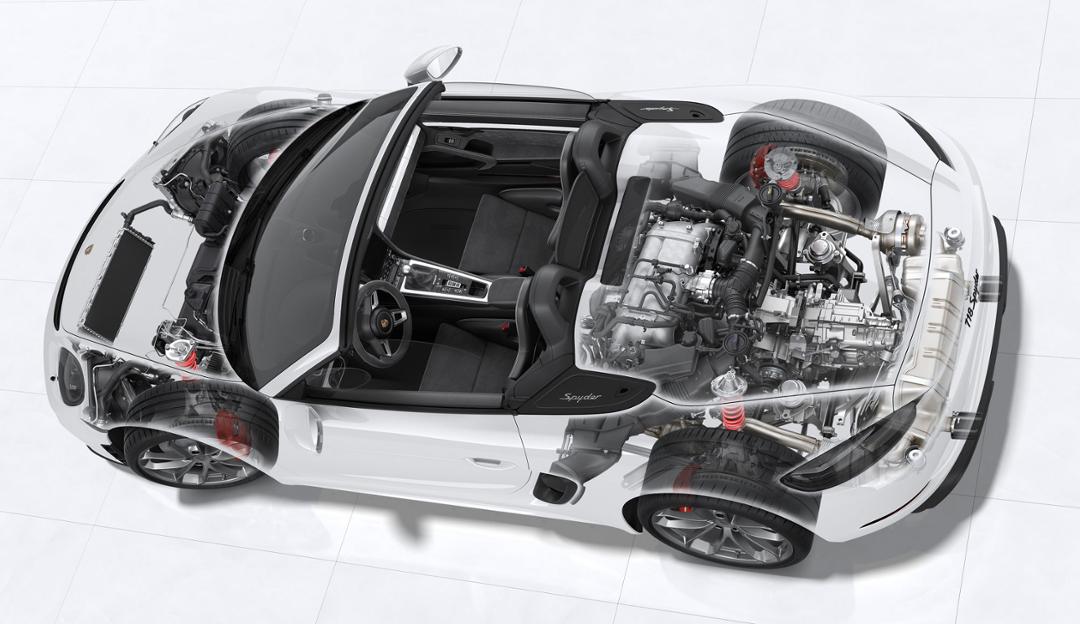
Porsche has managed to create an exhaust system that carries the new Particulate Filter for pollutants, but without losing the classic flat-six sound. In addition, with the Adaptive Cylinder Control system, in mild performance requirements, it alternately switches off fuel injection on each of the two sides of the engine, thereby reducing fuel consumption.
For the first time in a multiturn engine, thanks to Piezo injectors, we have direct injection, which is injected in 5 phases per total injection, in order to improve combustion. Also, the air intake system is equipped with 2 air distribution and directional valves, so that all cylinders get the same amount of air.
More downforce, same aerodynamic drag
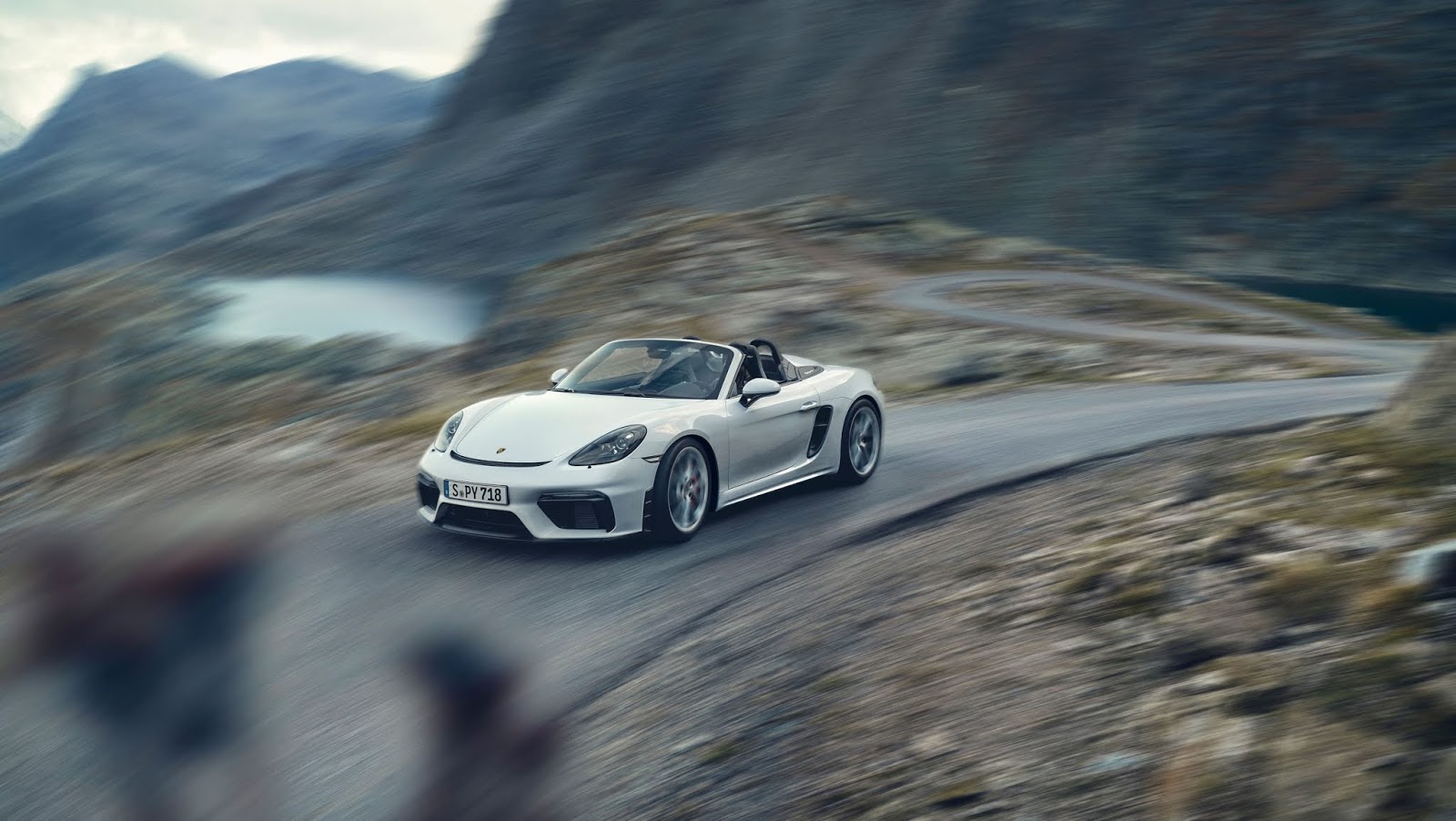
Another impressive technical feature of the GT4 is the improved aerodynamic design. In the 718 generation, it produces 50% more downforce, with a very slight increase in aerodynamic drag, which reflects its amazing aerodynamic performance.
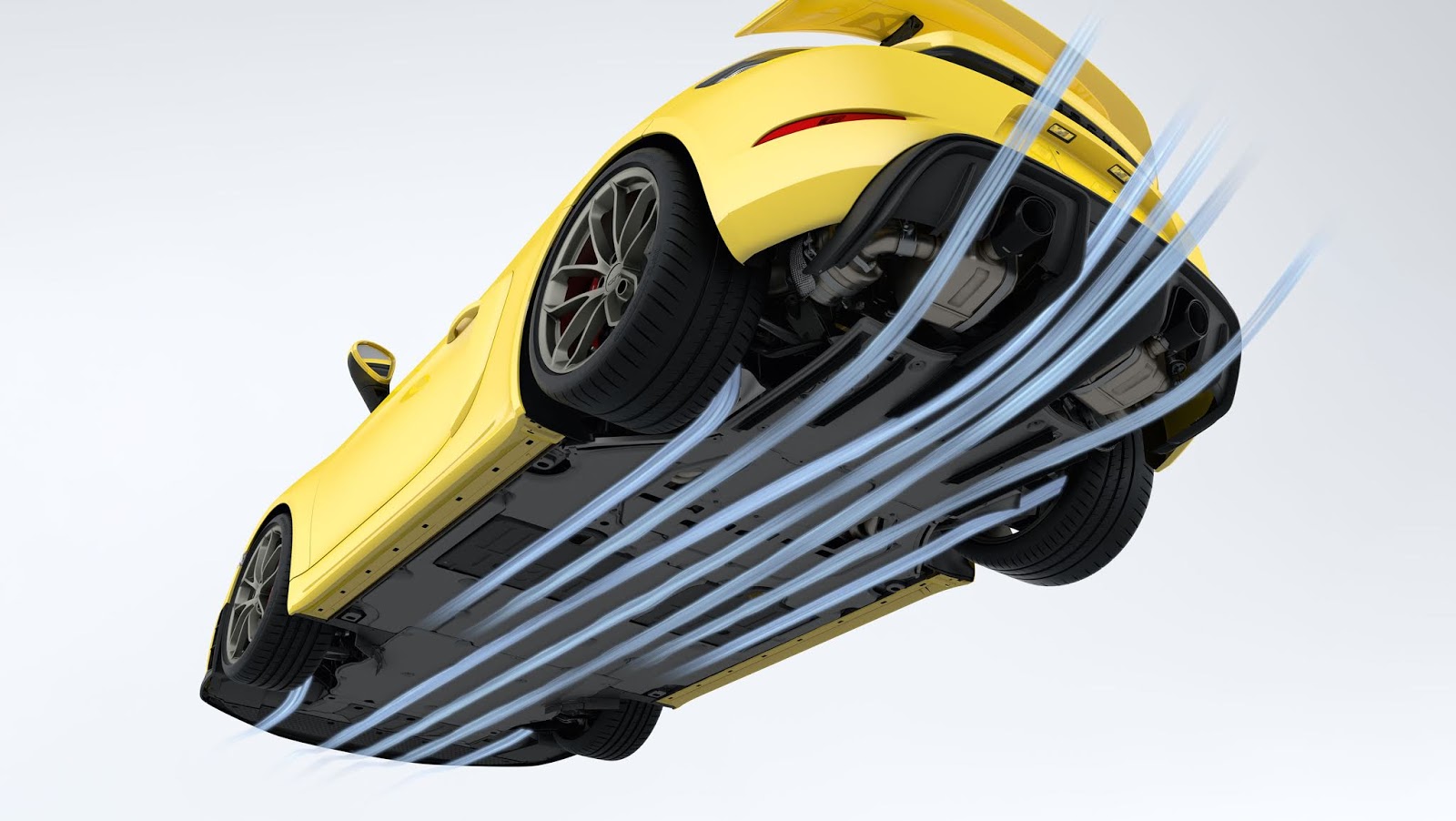
The aerodynamics of both models benefit greatly from the redesigned rear end, as the exhaust tips have been moved away from the centre, combined with the redesigned exhaust system end, there is now an empty space in the centre which has been used to fit an air diffuser, which alone produces 30% of the total downforce at the rear of the GT4.
The fixed rear spoiler, of course, has also been aerodynamically optimized, as it now produces 20% more aerodynamic load than the previous GT4, with this increase corresponding to 12 kg of load at 200 km/h.
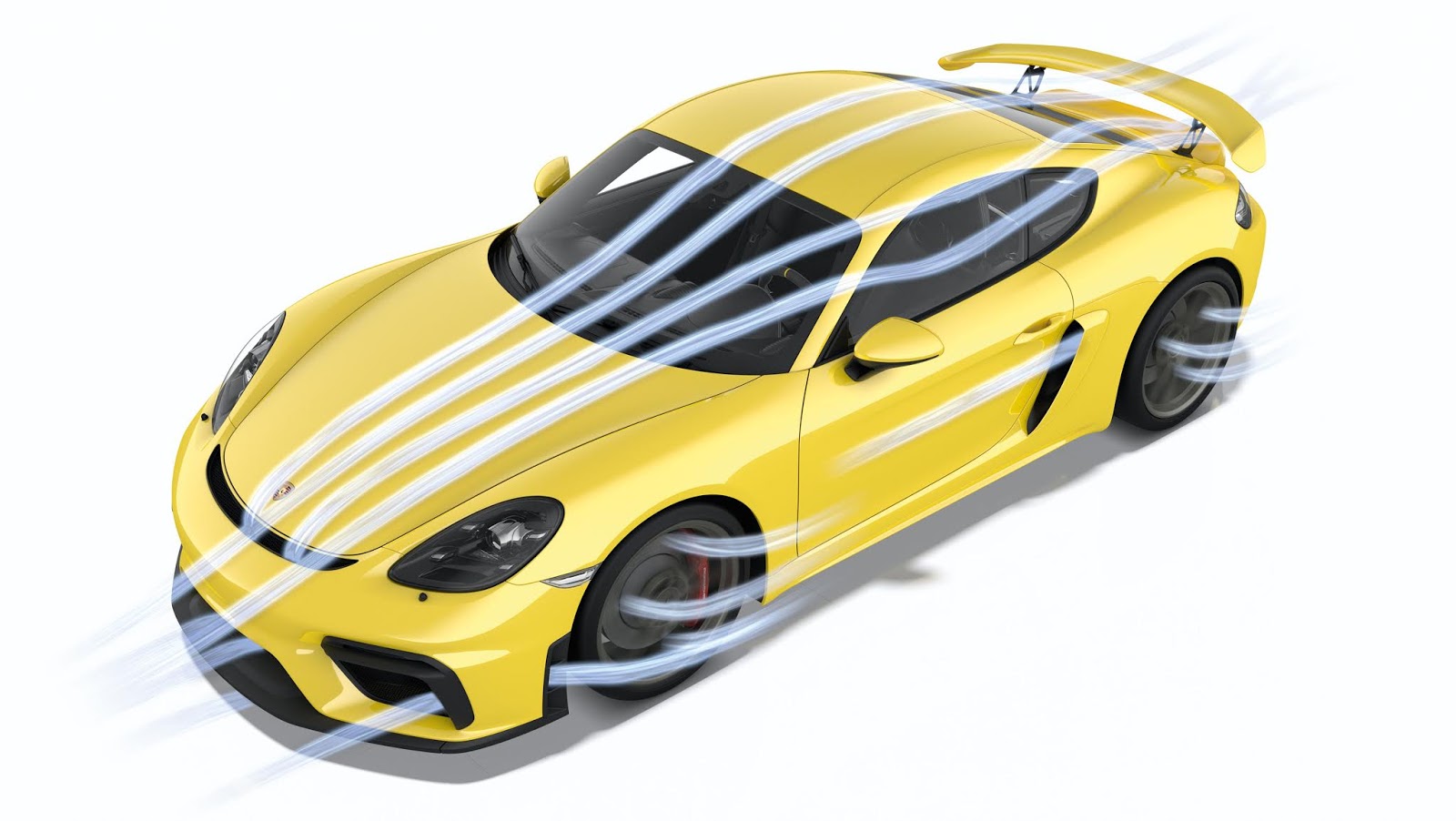
The front end, which also adopts the design of the company's GT Series models, features a large lip spoiler, which in combination with the "air curtains" (which ensure a smoother flow of air to the front wheels), makes the most of the airflow at the front.
718 Spyder : In the footsteps of the old
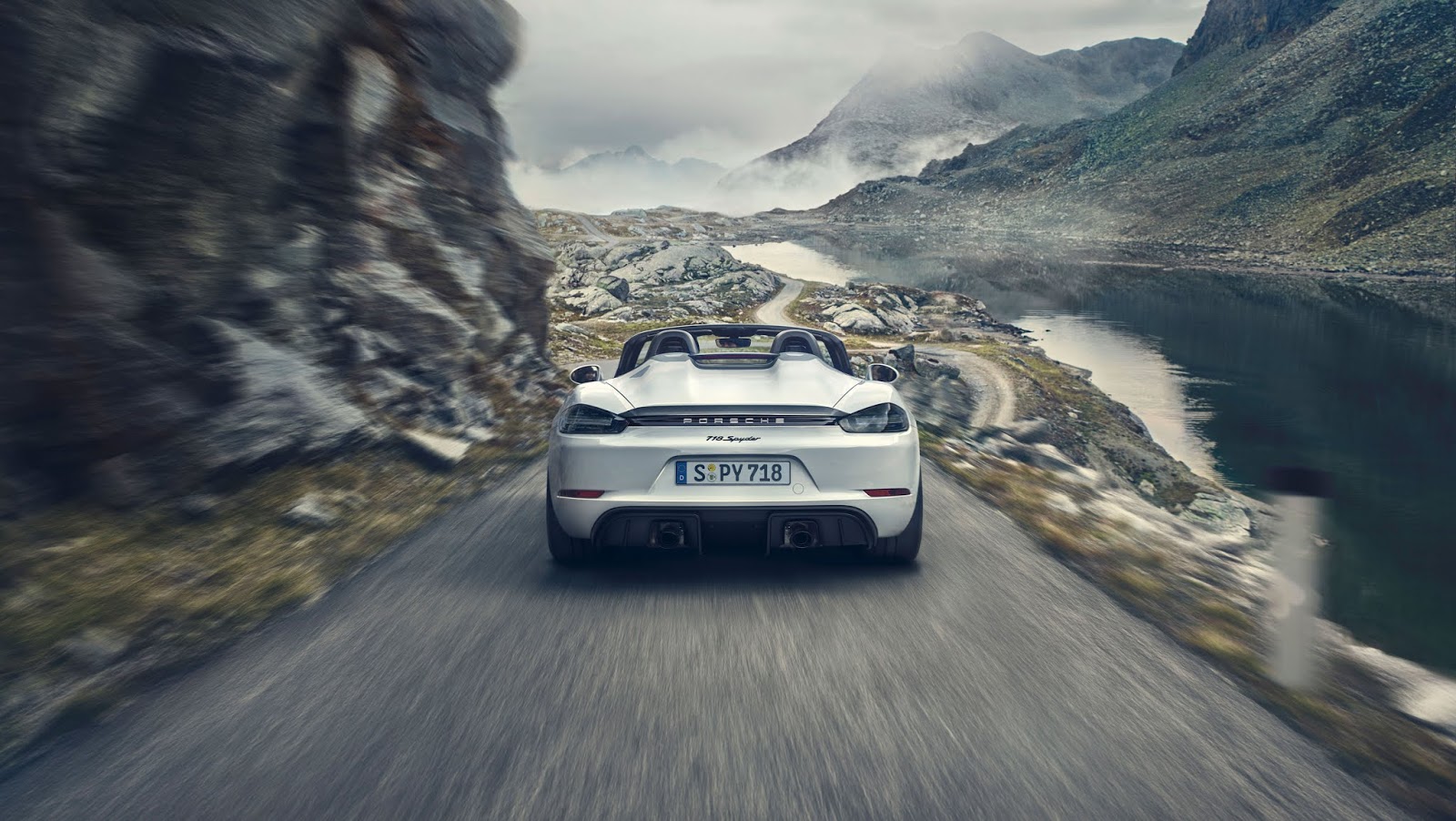
A common feature among all Porsche Spyder models, from the 550 Spyder to the 718 RS 60 Spyder, is the same philosophy, that of a car which, whether the roof is open or closed, has an unrivalled silhouette. The 718 Spyder is a "thoroughbred" sports car, which aims to achieve maximum driving satisfaction, with or without the roof, which can withstand up to its top speed (older models had a speed limitation with the roof in place). The roof has now been made easier and easier to use, with fitting much simpler than on the older Spyder, and can be stored in the luggage compartment in just a few steps.
Unlike the GT4, the Spyder has an active airfoil, which extends to 120 km/h, and thanks to the functional rear diffuser, it's the first Boxster to produce an aerodynamic load on the rear axle.
All at maximum, for the best possible performance
For the first time, a model in the Boxster range shares the exact same chassis as the Cayman. Both models carry an optimized version of the "simple" Porsche Active Suspension Management, and are also 3cm lower, making even better use of the chassis and suspension's capabilities. Also, in both models, Porsche Stability Management combined with Porsche Torque Vectoring ensure the best possible traction for the car, which in both cases wears a thin mechanical limited slip differential, without interfering too much with the whole experience.

The "package" is completed by high-performance brakes, with the option of ceramic brakes, combined with high-performance tyres, which Porsche has designed in collaboration with Michelin, especially for these two models.
In the case of the Cayman GT4, the Clubsport package is offered as an option in the extra equipment, with which Porsche fits a metal roll-cage, a hand-held fire extinguisher and a six-point seatbelt to the driver, with the option of a six-point seatbelt to the front passenger, while retaining the normal seatbelts so that it doesn't become tiring in everyday use.
It is worth noting that, according to Porsche's own statements, a Cayman GT4 is capable of doing a lap of the Nurburgring more than 10 seconds faster than the previous GT4.
Interior : Simple, functional
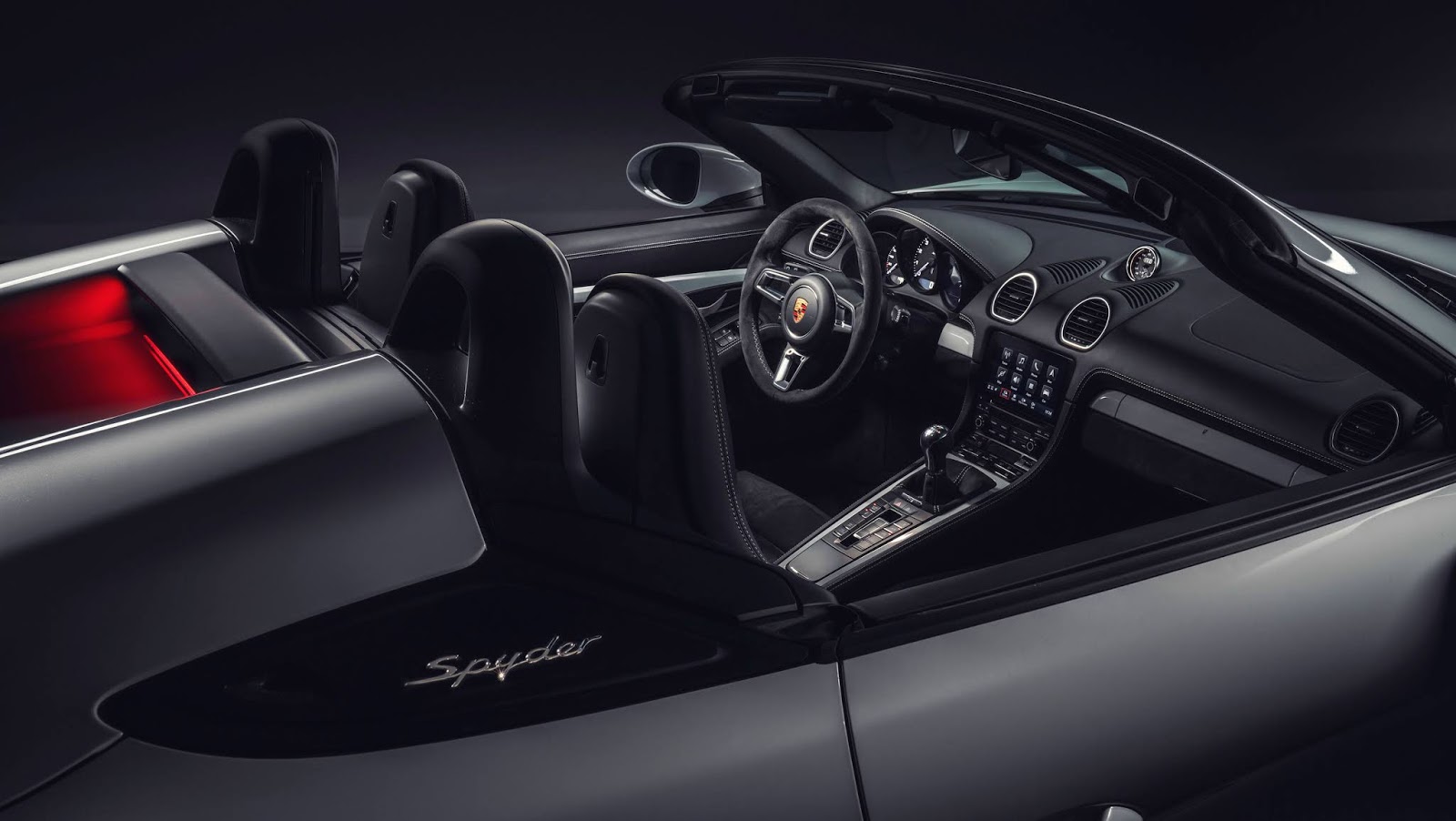
Opening the door and sitting in the left bucket of either model, you will notice that the interior has everything, but nothing more than you really need.
In front of it is the classic Porsche dashboard with its 5 round instruments. On the centre console is the touchscreen of the entertainment system. In the centre, below the gear lever, are all the buttons that control the driving and handling parameters of the car.
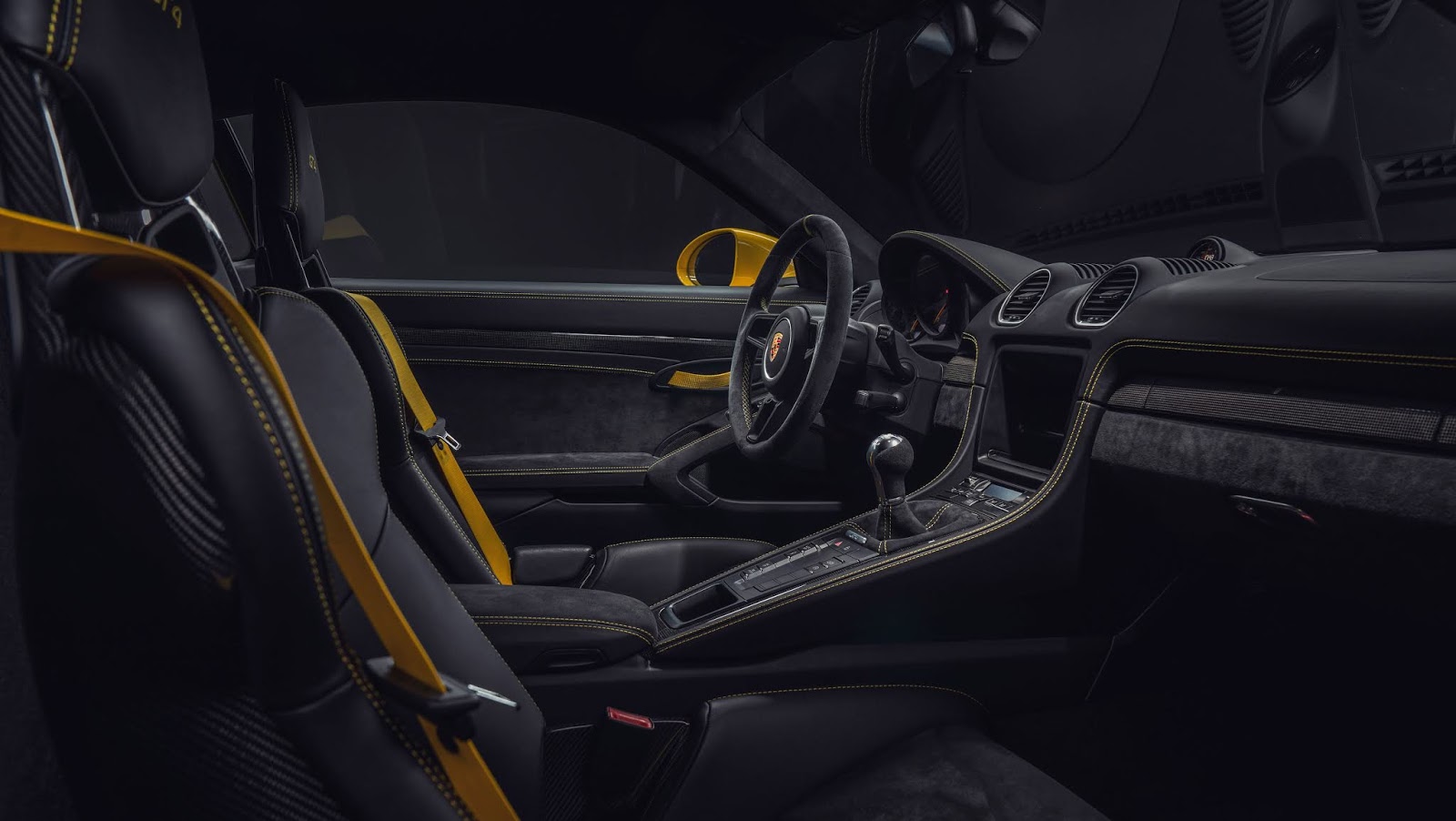
For the passenger, all he has in front of him are the two (admittedly impressive functional design) cup holders and nothing else.
There is everything, but nothing that is "left over".
Once again, Porsche gives the market what is "missing" that no other manufacturer has bothered to build. A sports car a la "old". With a multi-turbo atmospheric engine, a proper manual transmission and no crazy technologies or a bunch of useless gadgets.
Simple, mechanical, lightweight, with the engine in the centre. Sports car perfection, if I may call it that...


